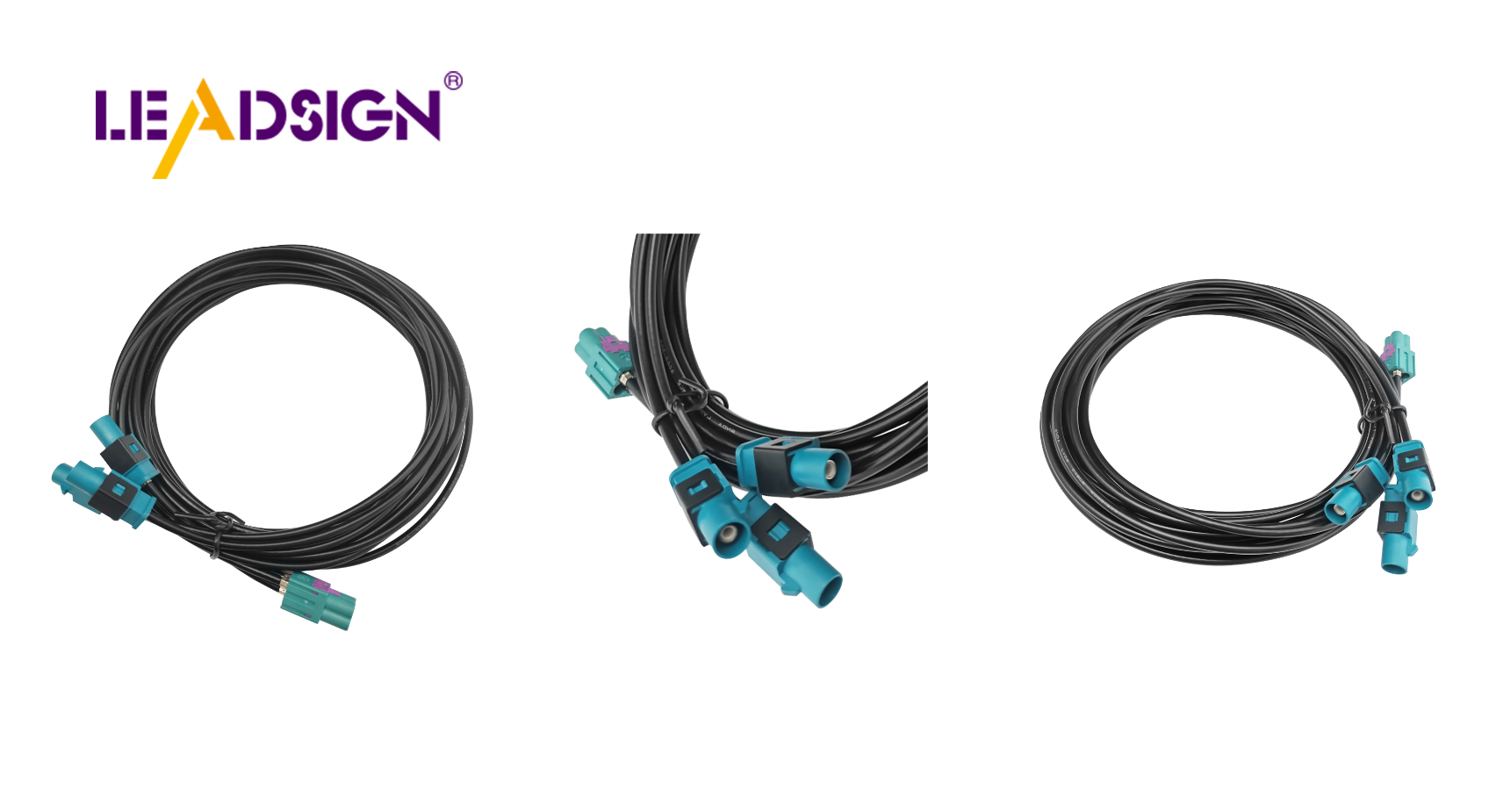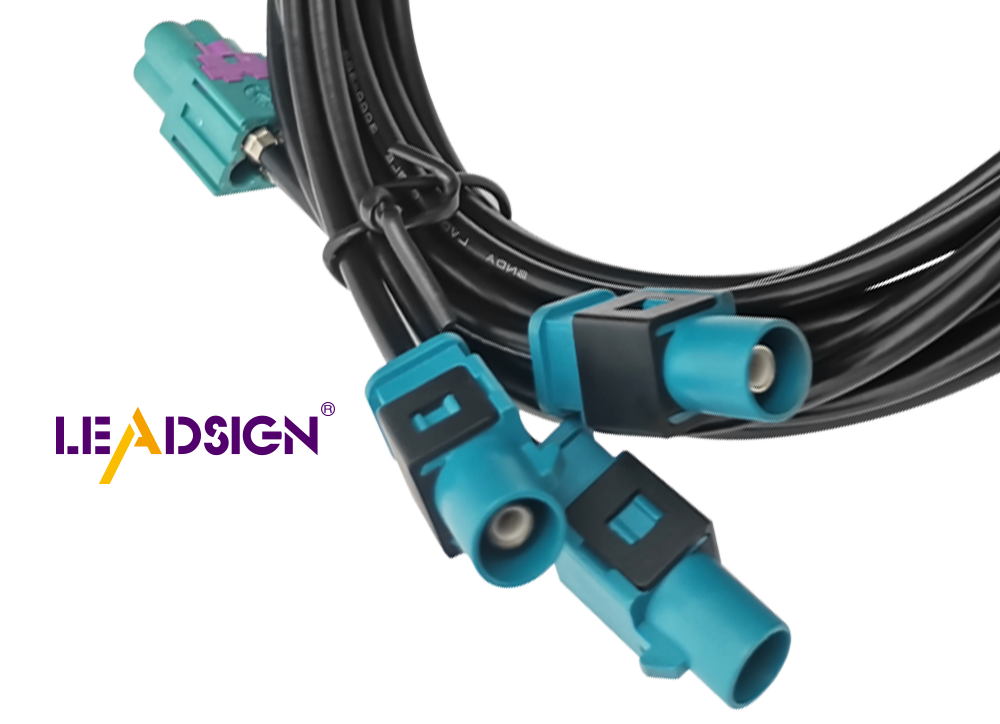Exploring Automotive Wiring Connector Types for Modern Vehicles

In today's cars, automotive electrical connectors types are very important. They help keep the car's electrical systems working well. These connectors make sure all parts talk to each other right. This gives you a smooth drive. If connectors are bad, your car might not work well because of weak connections. There are different types of car connectors, including automotive electrical connectors types. Some fail more than others due to heat or how many parts they connect. Knowing about these connectors helps you see why they matter for your car to run well and easily.
Overview of Automotive Wiring Connectors
Definition and Purpose
What are Wiring Connectors?
Wiring connectors are key parts in a car's electrical system. They link wires so electricity can move smoothly through the car. Without them, the car's electrical systems wouldn't work right. Think of them as glue that keeps the electric parts together, letting them talk to each other well.
Importance in Vehicle Electrical Systems
In today's cars, wiring connectors are very important. They make sure all electric connections are safe and strong. This is needed for your car's lights, music systems, and engine to work well. A bad connector can cause electric problems and safety risks. Knowing their importance helps you see how they keep your car running safely.
Basic Components of Connectors
Terminals
Terminals are metal pieces in a connector that touch the wire. They let electricity flow from one wire to another. There are different terminals like crimp connectors used in cars. Crimp connectors hold the wire tight for a good connection even when things get tough.
Housings
Housings cover and protect terminals inside them. They keep connections safe from heat and chemicals in cars. For example, Deutsch Connectors have strong housings that block dirt and water, perfect for heavy use.
Seals
Seals stop water, dust, and dirt from getting into connectors. They make connections last longer even in rough places. Weather Pack Connectors seal well against weather changes and chemicals, great for engines needing protection.
By learning about these parts, you understand how wiring connectors work and why they're so important in cars today.
Types of Automotive Wiring Connectors

Knowing different automotive electrical connectors types is key for your car's electric parts. Each type has its own job, good points, and bad points. Let's look at some common connector types in today's cars.
Blade Connectors
Features and Uses
Blade connectors are flat metal pieces that fit into slots. They are used where quick connections are needed in cars. You often see them in fuse boxes because they are simple to use.
Good and Bad Points
Good Points:
Easy to plug in and out.
Reliable for low to medium power uses.
Bad Points:
Not good for places with lots of shaking.
Only fit certain uses due to their shape.
Pin Connectors
Features and Uses
Pin connectors have pins that go into matching holes. They work well in many automotive electrical connectors types, like engines and sensors.
Good and Bad Points
Good Points:
Strong connection with many contact spots.
Works for both low and high power needs.
Bad Points:
Harder to set up than blade connectors.
Can rust if not sealed right.
Other Common Connector Types
Pigtail Connectors - Features and Uses
Pigtail connectors come with wires already attached, making it easy to connect things like lights or sensors in cars.
Pigtail Connectors - Good and Bad Points
Good Points:
Make setup easier by cutting down extra wiring.
Offer a strong connection.
Bad Points:
Need more space because of extra wires.
Limited wire length options.
Crimp Connectors - Features and Uses
Crimp connectors are popular automotive electrical connectors types. They hold wires tight by squeezing the connector onto them. Used from battery ends to joining wires together.
Crimp Connectors - Good and Bad Points
Good Points:
Strong, long-lasting connection.
Stand up well against shaking and weather changes.
Bad Points:
Need special tools to put on.
If done wrong, can cause weak links.
By knowing these automotive electrical connectors types, you can choose wisely when fixing your car's electric parts. Each type fits certain jobs best, so pick the right one for smooth car operation.
Picking the Best Connector for Cars Today
Choosing the right connector for your car is very important. It makes sure all electric parts work well and safely. Here are some things to think about when picking one.
Things to Think About
Power Needs
First, know what power your car needs. Different connectors handle different volts and amps. Pick a connector that can carry the power it needs. This stops it from getting too hot or breaking.
Where It Will Be Used
Think about where the connector will be used. Will it get really hot, wet, or touch brake fluid? Choose connectors made for these tough spots. Look for ones with an IP rating. This shows they keep out dirt and water, working well over time.
"Toughness: Car connectors are made to handle hard conditions like heat changes, shaking, and stress."
Matching with Car Parts
OEM vs. Other Connectors
Decide between OEM and other connectors. OEM ones fit your car's original parts just right. They work great together. Other connectors give more choices and might be cheaper but might not fit as well.
Making Sure It Fits Your Car
Make sure the connector fits your car's parts right. Check what your car's electric parts need first. This stops problems from wrong matches later on. Good fitting means everything works smoothly together.
By thinking about these things, you can pick the best connector for your car. This choice helps your car’s electric parts work better and last longer.
How to Install and Fix Problems
Installing Connectors Right
Putting in car wiring connectors right helps them work well. Follow these steps for a strong connection.
Tools You Need
To put in connectors, get these tools:
Wire cutters
Crimp tool
Heat blower (for heat shrink)
Tester (to check connections)
Screwdrivers (different sizes)
Having these tools makes the job easier.
Easy Steps to Follow
Get Wires Ready: Cut off the wire cover with cutters. Show enough wire for a good link without hurting it.
Pick the Connector: Choose the right connector for the wire size and use. Make sure it fits your car's needs.
Connect It: Put the bare wire into the connector. Use a crimp tool to hold it tight. Press hard so it stays firm.
Seal It Up: For heat shrink, slide tubing over and blow hot air on it to seal out water.
Check It Works: Use a tester to see if it's connected well. This checks if you did it right.
By doing this, your car’s wires will connect safely and last long.
Fixing Usual Problems
Even when done right, problems can happen. Finding and fixing them fast keeps your car running well.
Spotting Bad Connectors
Bad connectors can cause electric trouble. Look for:
Loose or rusty ends
Burned or melted covers
Flickering electric parts
Checking often helps find issues early before they get worse.
How to Fix Them
When you find a bad connector, do this:
Turn Off Power: Before fixing, unhook the battery for safety.
Clean It Up: Clean rust or dirt with cleaner spray to make better contact.
Swap Broken Parts: If broken, change out with new ones that match old specs.
Put Back and Test Again: After fixing, put back together and test with tester to be sure it's fixed.
Fixing problems quickly keeps your car’s electric system working well and driving smooth.
Choosing the right wiring connectors is very important. They help your car's electric parts work well. Connectors let power and data move smoothly. This is needed for cars with new tech like ADAS. As car tech gets better, so do connectors. They are getting smarter, faster, and greener. This shows how the industry cares about safety and the planet. By learning about these changes, you see how connectors make cars run better and last longer.
See Also
Significance of Fakra Auto Connectors in Contemporary Cars
Fundamentals of HSD Connectors in Auto Sector
Discovering the Advantages of Fakra Auto Connectors

